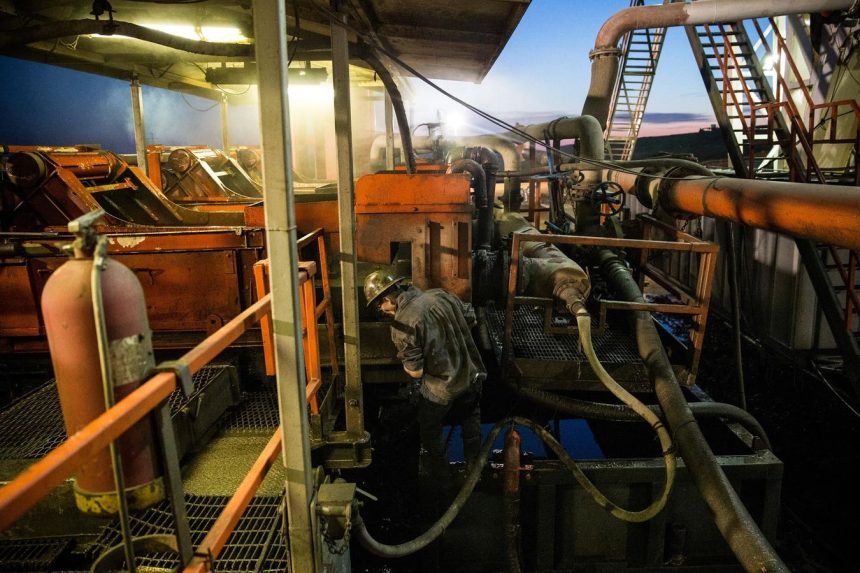The United States’ long-standing preference for a strong dollar is undergoing a significant shift, driven by evolving economic realities and the changing global landscape. For decades, American consumers, both individual and corporate, championed a strong dollar because it reduced the cost of imported goods, most notably energy. The US government also benefited, as a strong dollar lowered borrowing costs, facilitating the financing of government operations and a ballooning national debt. This mutually beneficial arrangement allowed the US to run substantial deficits for years, with the world, particularly foreign governments, readily purchasing US Treasury bonds. However, this dynamic is now unraveling, as the very strength of the dollar creates headwinds for both the US economy and its ability to manage its debt.
The global reserve status of the dollar has historically provided the US with a distinct advantage in international borrowing markets. Foreign investors, seeking the stability of the dollar, accepted lower interest rates on US Treasury bonds compared to bonds issued by countries with less stable currencies. This allowed the US to accumulate debt at a lower cost, effectively subsidizing its spending. However, the current strength of the dollar is placing strain on other economies, particularly emerging markets. As the dollar appreciates, other currencies weaken, making it more expensive for these countries to service their dollar-denominated debts and import essential goods. Consequently, foreign governments, facing economic pressures at home, are now becoming net sellers of US Treasuries, reducing demand and driving up interest rates. This creates a vicious cycle: Higher interest rates increase the cost of servicing the US national debt, further exacerbating the deficit and necessitating the issuance of even more debt.
The rising cost of servicing the US national debt poses a significant challenge to the federal budget. With interest payments already consuming a substantial portion of the deficit, any further increase in interest rates places additional strain on government finances. This budgetary pressure could force difficult choices between servicing the debt and funding essential programs and services. The situation is further complicated by the fact that the US needs to continually issue new bonds to finance its ongoing deficit. The reduced demand for these bonds from foreign governments, a direct consequence of the strong dollar, further pressures interest rates upward. This creates a precarious situation for the US economy, potentially leading to a debt spiral if interest payments continue to accelerate at a pace that outstrips economic growth.
The strong dollar, once welcomed for its ability to lower energy costs for American consumers, is now also presenting challenges to the US energy sector. While the growth of US shale production has contributed to global supply and helped to moderate energy prices, the strong dollar is hindering further growth in this sector. US shale producers face higher costs as they operate in a dollar-denominated environment. This puts them at a disadvantage compared to producers in other countries whose currencies have weakened against the dollar. These producers can realize higher prices for their oil in their local currencies, incentivizing production growth while US shale production stagnates. Furthermore, the strong dollar dampens oil demand in emerging markets, placing a ceiling on global oil prices and further limiting the profitability of US shale production.
These converging economic factors are creating a complex scenario for US policymakers, particularly as the incoming administration focuses on addressing the national debt. Plans to leverage increased domestic oil production as a means to stimulate economic growth and reduce the deficit face a significant hurdle in the form of the strong dollar. A strong dollar discourages domestic oil production growth and limits the potential benefits of this strategy. This confluence of economic pressures suggests that a shift in policy towards a weaker dollar may become increasingly appealing. A weaker dollar would provide relief to emerging markets, increase demand for US Treasuries, and potentially stimulate growth in the domestic energy sector.
A shift towards a weaker dollar preference would represent a significant departure from decades of established policy. It would have far-reaching implications for the global economy and financial markets. Emerging markets, currently struggling under the weight of the strong dollar, would likely benefit from increased competitiveness and reduced debt burdens. Commodity markets, including oil, could see renewed price appreciation, stimulating investment and production. However, a weaker dollar could also lead to inflationary pressures in the US, as the cost of imported goods rises. Balancing these competing interests will require careful navigation by policymakers as they grapple with the long-term implications of a changing global economic landscape.



